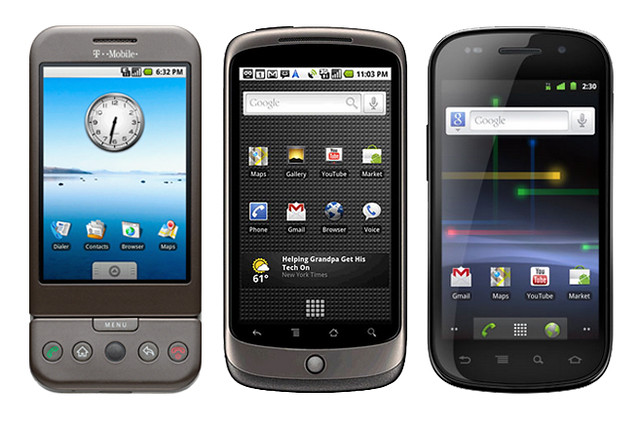Boy Genius Report recently reported some new details rumoring what the next Google Nexus device might include. Several of the things listed we find to be entirely reasonable to expect for a phone rumored for launch around Thanksgiving, while some others we are more skeptical about. A next-generation dual-processor between the 1.2GHz and 1.5GHz clock speeds seems to line up sensibly with when we’d expect these types of chips to be readily available to manufacturers. The source indicated to BGR that an OMAP 4460 or a successor to the current Qualcomm Snapdragon dual-core chips are likely to be the choices for the silicon on board, the latter being backed up by Google’s choice with the original Snapdragon in the Nexus One back in early 2010.
Other listed specs that we find to be reasonable are the inclusion of 1GB of RAM (which we have already seen on several devices: HTC EVO 3D and Motorola Atrix), Android 4.0 (Ice Cream Sandwich) as this would be the device to showcase the new version of the OS, and a 5 MP camera with the ability to capture 1080p video.
Granted, some more screen real estate would need to be gained to make room for the software based Android buttons, but 720p is a huge jump. Even compared to the highest resolution qHD devices right now, you’d be adding over 30% more pixels vertically. We’d bet that a resolution that high on any display smaller than the largest of Android phones out there (Dell Streak at 5 inches and Samsung Infuse 4G at 4.5 inches) would shrink the OS down to a point of being close to if not unusable by a majority of users. Touchable aspects of the OS need to be large enough to be recognized distinctly by the touch of a finger, and if this phone isn’t actually monstrous in proportions I have doubts that it would work well. ThisIsMyNext’s Chris Ziegler shared my skepticism about the display in his piece about the rumor, stating “the Dell Streak’s commercial failure suggests that customers aren’t going to tolerate a 5-inch phone, and 720p is of questionable value if you go far below that size.”
The last part of this rumor that I have to question is about the indication that the phone would include an LTE chip for high speed data connections. BGR states that this could mean that it is intended to be one of the first LTE devices on the AT&T network. However, this makes me quite curious about who Google’s preferred US carrier is at this point, if they have one. In the past Google had maintained a close relationship with T-Mobile, releasing the original G1, the Nexus One, and the Nexus S on the now questionably-futured GSM carrier. Now that AT&T is potentially going to acquire T-Mo, it would make sense that they could swoop in as the preferred carrier. However, signs lately have hinted at close ties between Google and Sprint (the launch of the Nexus S 4G with Wimax capabilities & the Google Wallet partnership). Sprint also has recently showcased its dedication to ideals of openness and consumer friendly policies, maintaining the only true, unthrottled & unlimited data plans in the US as well as choosing not to block/hinder tethering applications which bypass the carriers tethering plans (which both AT&T and Verizon have done).
Speaking of Verizon, it’s hard not to think immediately of the nation’s largest when mentioning LTE. While they were the first of the national carriers to launch LTE and all signs show that they will have built out their US coverage much further than AT&T at that point, I have my doubts about Verizon launching a pure Google device. Since the original Motorola Droid they have maintained an onslaught of Android devices loaded with bloatware, Verizon specific applications, and Bing set as the default search. On top of that, they’ve taken a hard stand against tethering apps, a built-in Android feature since Froyo.
It seems to me that at this point in time, none of the four major carriers are really a choice without downsides, but I feel like Sprint makes the most sense. The only negative is that because Sprint is a CDMA carrier a different device would be necessary for global developers to use. Only time will tell what choice they make, and I’d venture to say that Google is probably as uncertain of what the US carrier layout will look like a year from today as the consumers are.
Source: BGR




